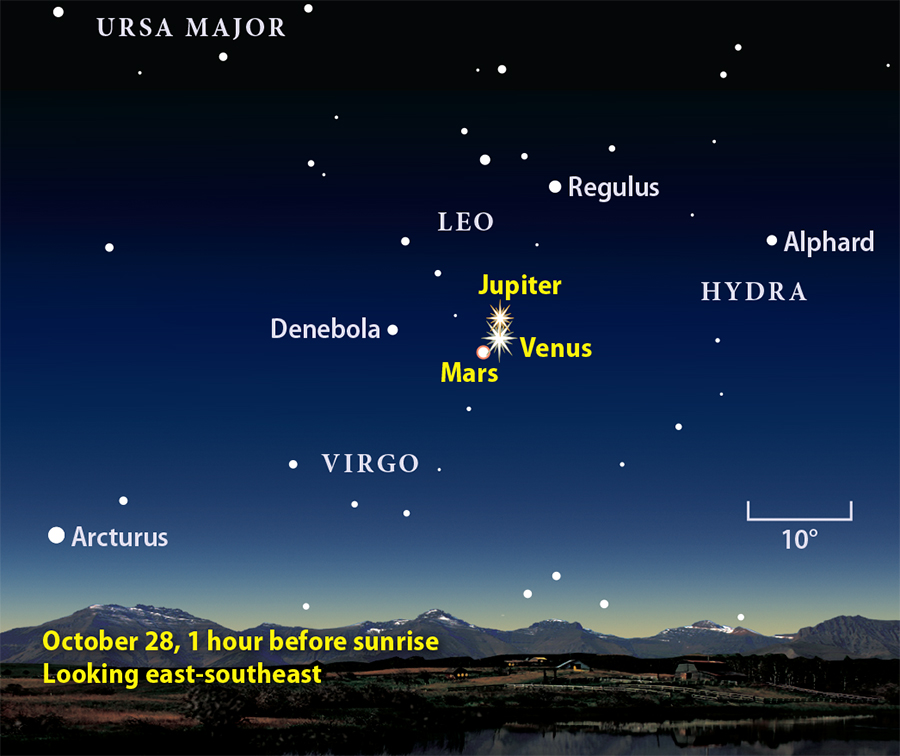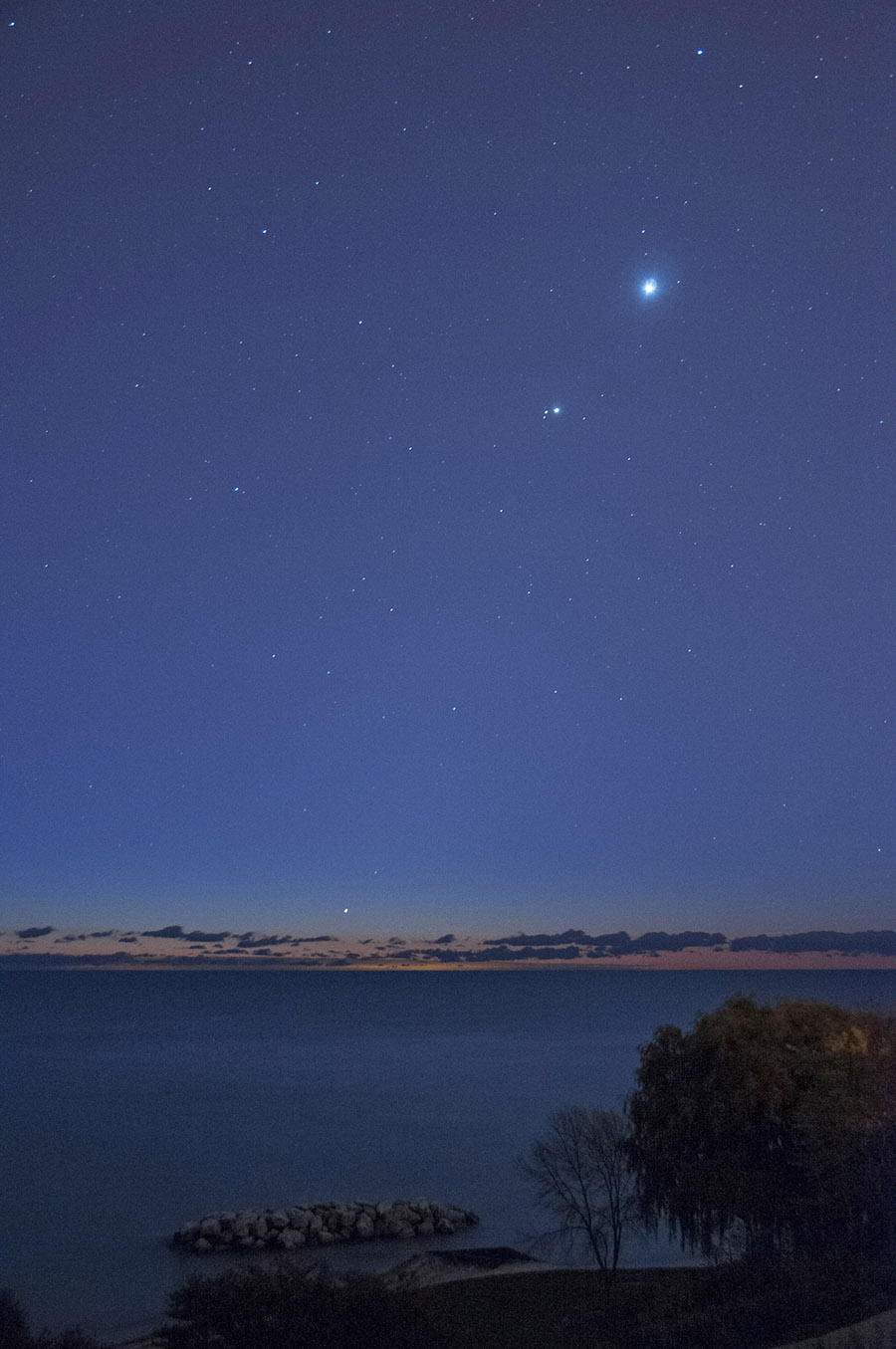Capture Venus with your camera
If you’ve been outside before dawn lately under a clear sky, you’ve seen some cool planetary activity in the eastern sky. Venus, Jupiter, and Mars have been congregating near one another in the constellation Leo the Lion.
Venus shines brightest (at magnitude –4.6). Jupiter shines only 8 percent as bright (at magnitude –1.8), but that’s still brighter than any star in the sky. Finally, Mars brings up the rear at magnitude 1.8. If the Red Planet is your favorite, don’t despair. It will brighten by a factor of 36 between now and May, when it will shine at magnitude –2.1, brighter than Jupiter is now.
Venus shines brightest (at magnitude –4.6). Jupiter shines only 8 percent as bright (at magnitude –1.8), but that’s still brighter than any star in the sky. Finally, Mars brings up the rear at magnitude 1.8. If the Red Planet is your favorite, don’t despair. It will brighten by a factor of 36 between now and May, when it will shine at magnitude –2.1, brighter than Jupiter is now.
Venus, Mars, and Jupiter create dramatic scenes throughout October. On the 28th, the three form a tight triangle. // Astronomy magazine: Kellie Jaeger
The morning show looks great with just your eyes or through binoculars. Telescopes, unfortunately, don’t have a wide enough field of view to show all three at once. But your camera can.
Whether you shoot with a top-notch DSLR, a point-and-shoot model, or your cellphone, you can capture the view. Here are five tips to help you get the best picture you can.
1. Try a wide range of settings. Let’s be honest. You’ve probably never shot the sky before, so you don’t know what f/stop, ISO number, or exposure time to choose. So, pick them all. It’s not like you’re paying for film or development. You can shoot 100 shots if you want — for free. Examine them later, and toss the ones that don’t make the grade.
2. Mount your camera on a tripod. Because you won’t get much more than Venus as a speck with a handheld shot (because you can hold the camera steady enough during long exposures), using a tripod will help stabilize your camera.
This shot shows brilliant Venus at the top, with Mars and Jupiter paired up to its lower left. The photo adds Mercury, the bright object near the horizon. // Ernie Mastroianni
4. Focus carefully. Show someone an out-of-focus image you took, and they may not say anything. But I guarantee you they’ll think, “Oh, wow, you got up so early, and this is what you have to show for it?” Of course, people think similar thoughts about unfocused images of the Mona Lisa, the Hoover Dam, or Grandma Irene. We’re used to seeing sharp pictures.
You may not know this, but most of today’s camera lenses can focus past infinity. Back in the day, lenses didn’t do that. Photographers would crank them all the way clockwise or counterclockwise and, boom! Perfect focus. Now you have to line up an arrow with the “sideways 8” on the lens.
The easiest way to focus is to aim at a distant earthly object. Then don’t touch the focus ring again. If such an instruction makes you paranoid, you can tape the focuser using blue painter’s tape, which won’t leave a residue. Oh, and turn off your lens’ autofocus. Pointing it at the sky wreaks havoc with the high-tech focusers manufacturers use today.
5. No flash. Turn your flash off. You can’t light up any of the planets from Earth’s distance to them anyway. All you’re doing is burning through your battery life. Also, using a flash limits your exposure time to some fraction of a second. And as I’ve written above, you’ll need longer exposures than that to capture all three planets.
If you get an image you’re proud of, send it and all the camera/lens/exposure details to ReaderGallery@Astronomy.com. Who knows? Thousands of people may enjoy your shot online. Good luck!
Comments
Most recent | Oldest to newest

Added 18 hours ago
Esop Fables said:
Jesus christ...I was up early this morning and I didnt see a thing...
Join our Community!
Our community is FREE to join. To participate you must either login or register for an account.
FREE EMAIL NEWSLETTER
Receive news, sky-event information, observing tips, and more from Astronomy's weekly email newsletter.
Click here to receive a FREE e-Guide exclusively from Astronomy magazine.
Recent Blog Posts
Tag Cloud
Find us on Facebook





